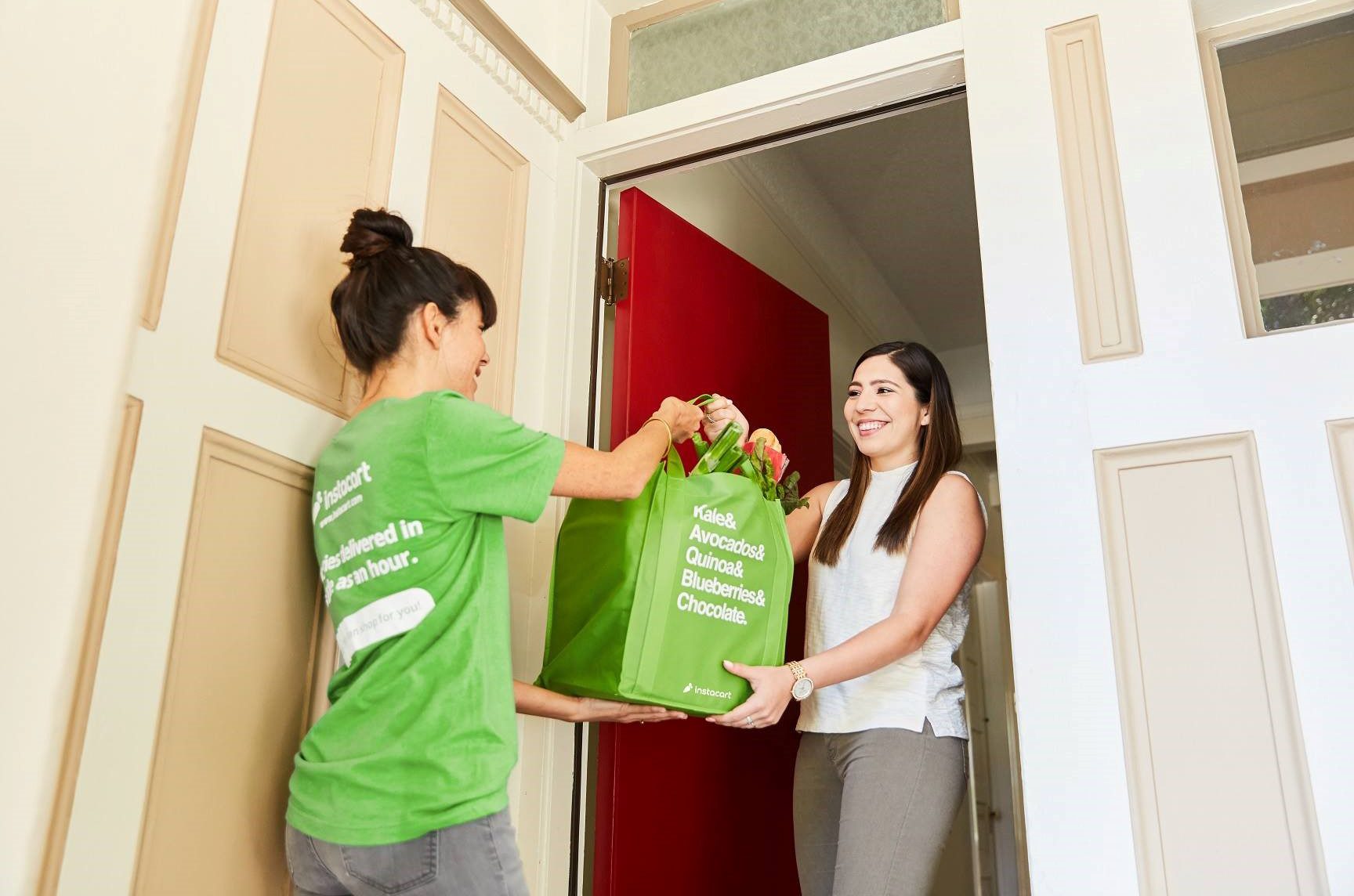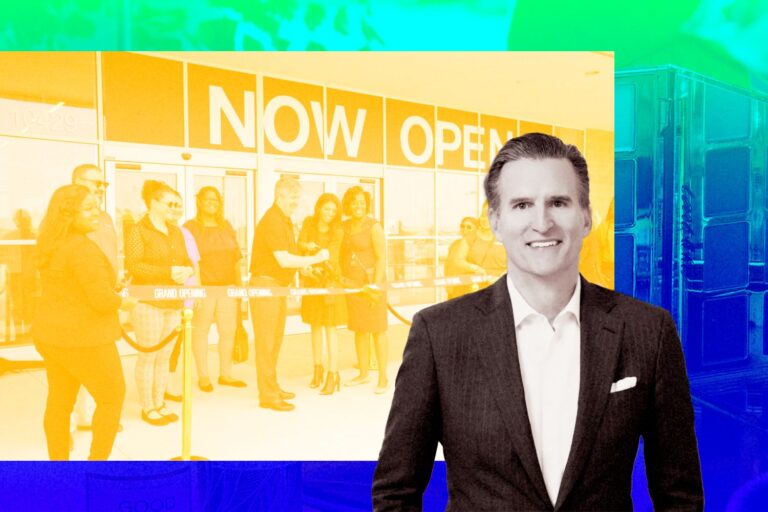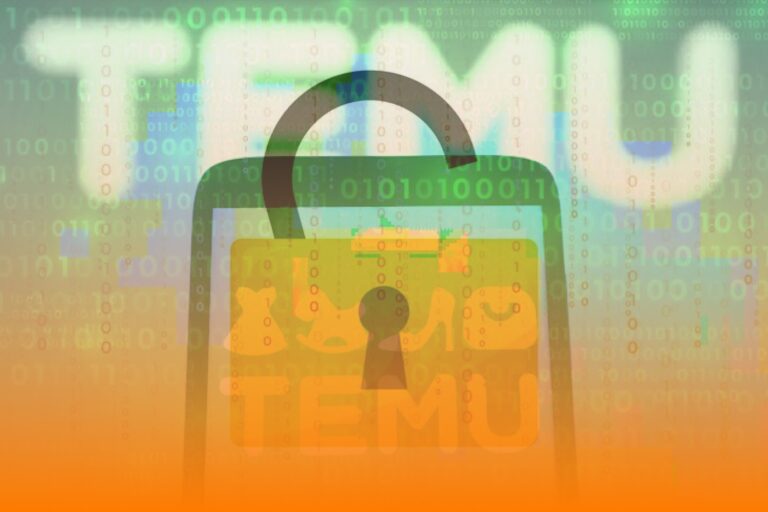Will the Dominance of Instacart Prevail after the Pandemic?
The world pandemic crisis is reshaping genuinely not only human routine life at once and also the entrepreneurial paradigm shift in revamping both essence proposition, business models and strategic valuation to outlast. During quarantine, social distancing has created a probably new scenario including a shift toward more people working from home, which means that they limit trips to grocery stores, spend more time on screen and attach in digital realm, and focus on online delivery services.
By the date, employees can choose to work from home and this rate will remain to permanently increase post-quarantine. According to public announcement, Google has articulated that a majority of employees can work from home until 2021. Twitter CEO Jack Dorsey has implemented adaptive policy that employees would be allowed to work from home permanently, even after the Covid. Beyond any doubt, working from home is creating many opportunities for the acceleration of e-commerce investments and pose challenges for traditional retail industry. Online delivery landscape will likely become ubiquitous, not just for sustenance, but also for fast-consuming products, local grocery stores and sit-down restaurants.
In time of crisis, the surprising truth is that the fight for the USD 800 billion grocery industry has tangibly manifested disruptive ramifications. Look deeply inside this rigid competitive market share, Instacart is ultimately outstanding to illustrate dramatically spiking steps that has shaken up and carried out veiled threats to Amazon, Whole Food Market and more. Whilst grocery stores are becoming increasingly out of position and navigating for new directions, Instacart has been quick to embrace the technology for online ordering, fulfillment and deliver.
What is Instacart and How Does It Works?
1. The Inception of Instacart
Instacart is one of the largest American retail companies that runs on-demand grocery delivery services using independent contractors to deliver groceries right to your door, as well as pick-up service. Instead of making a beeline for grocery store to purchase must-have products, you can use the service provided by Instacart via a website and mobile app to order all of your items. Currently, Instacart has promoted the service to 5,500 cities in all 50 U.S states and Canadian provinces. To aggrandize the digital retail prototype, Instacart has collaborated with over 350 retailers that have more than 25,000 grocery stores.
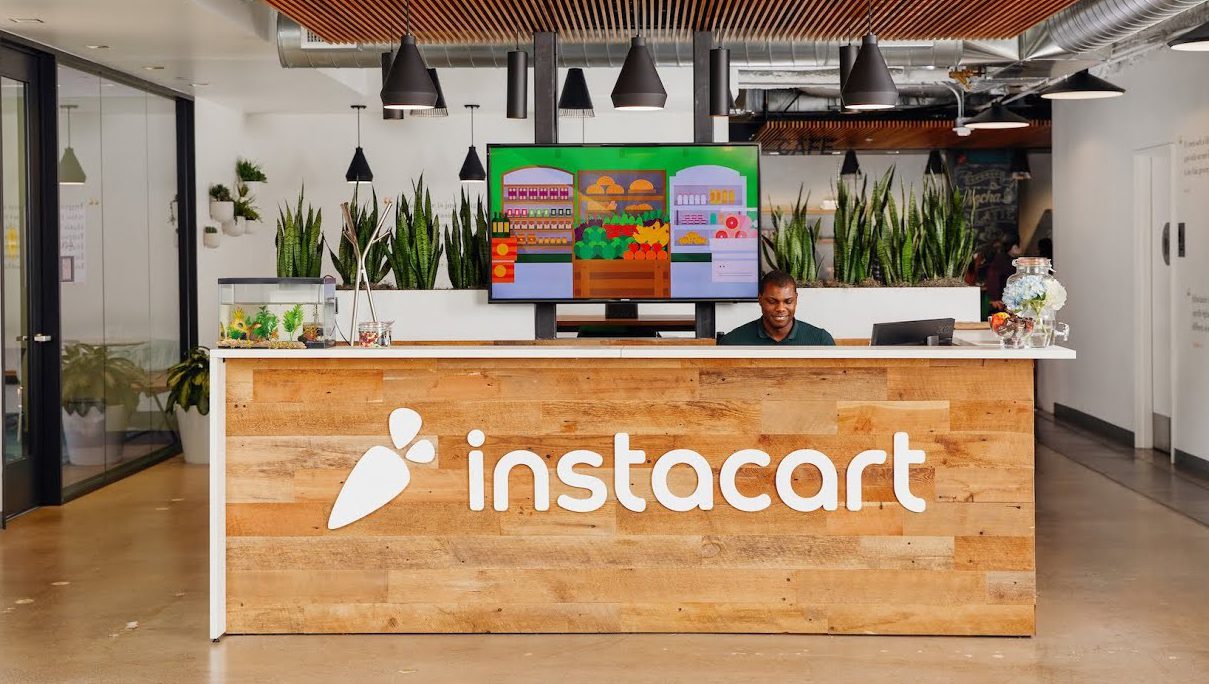
Instacart was established since 2012 with headquartered in San Francisco by entrepreneur Apoorva Mehta, a former Amazon officer. Apoorva previously worked at BlackBerry, Qualcomm and later Amazon as a supply chain engineer, where he designed fulfillment systems to optimally manage the package shift from Amazon’s warehouse to customers’ dwellings. Before founding Instacart, Apoorva had started more than 20 enterprises. He attempted to build an advertising network for social gaming companies and developed a social network dedicated to lawyers, among other start-ups.
After a few years of inception, Instacart quickly became a Silicon Valley darling and is currently positioning at roughly USD 8 billion valuation. Instacart is now a nationwide service that elevates grocery shopping experience and frees up time for consumers.
From mid-March to mid-April 2020, Instacart has employed an additional 300,000 workers to meet the emerging waves in demand for grocery deliveries during lock-down time. Instacart also implemented new services to deal with pandemic crisis, including a contactless delivery option, safety kits and guidelines for shoppers, along with a new sick leave policies and subsidies for those impinged by COVID-19.
2. The Digital Adoption Platform Implementation of Instacart
Instacart allows you to add your favorite products to your grocery list from local grocery stores, set your personal preferences, and add notes to your orders. After that, the order will be directly sent to an Instacart individual shopper to fulfill and deliver your order to you the same day. Unlike other grocery delivery services, the company doesn’t stockpile fresh produce in a massive warehouse. Instead, their shopper shop at the major grocery stores in your area like Kroger, Shaw’s and Costco via its website and then send your order to one of the part-time workers. This individual shopper heads to the store, selects everything on your list, and then drives it to you in their own car.
Instacart makes the online shopping process convenient and extremely user-friendly. First, you’ll notice that you can search for products in few different ways. You’ll be able to browse by product category, see new arrivals and featured products, and find current deals and coupons.
After finding a product you would like to order, you will press the green button “Add to cart”. At this point, you can leave any special instructions you want personal shopper to know. Additionally, if the product is not available, you can leave instructions as to how the shopper can replace it.
At the completion of your order, you will be required to provide your delivery address, mobile phone number, payment method and delivery time. One of the great things about using Instacart is that you can opt for delivery same day, sometimes within an hour or two, you can schedule it for a future date. When your order is placed, you will be updated with notifications regarding your delivery status whilst Instacart shopper finds all your items and delivers them to your door. You will be given updates with the estimated delivery time and when your order is en route to your home.
3. How Much Does Instacart Cost?
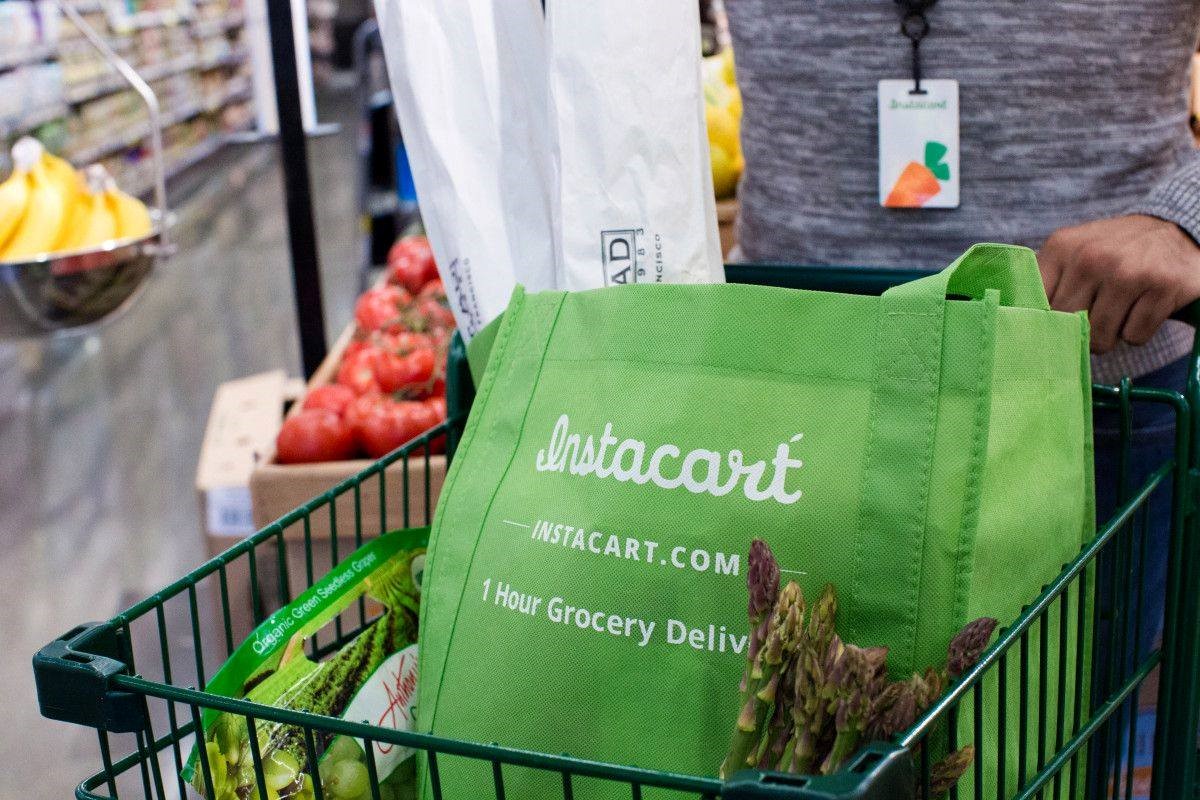
Orders are fulfilled and delivered by an Instacart individual shopper, who selects, packs and delivers the order followed up through the customer’s designated time frame – with an hour or up to five days in advance. Customers pay with personal debit or credit cards, regarding with Google Pay or Apple Pay. There are 3 costs for Instacart to deliver groceries: Delivery costs, grocery expenses and gratuities.
Delivery costs: Instacart’s free shipping is available on your first order. You do not need to be a member to shop with Instacart. However, if you sign up for Instacart Express (starting at USD 99 for the year or USD 9.99 as if you follow it monthly), you’ll receive free shipping for orders that surpass USD 35. Same-day delivery for non-Express members starts at USD 3.99 for orders accurately exceeding USD 35.
Instacart’s delivery costs will diverge depending on which the city you are temporarily residing in, what time you order, and how many items in your order. This shipping fee can stretch from USD 3 to USD 10 and sometimes, even more, depending on the order details. As if you have an order which has multiple items, you may be charged a higher delivery fee. For instance, if your order has 50 items compared to smaller order of 10 items, you may likely end up disbursing more as you are taking up more time from your Instacart shoppers.
Also, if you place an order during busy times, you may encounter “Busy Pricing” when paying. This happens when there are many Instacart orders and not enough Instacart shoppers. Due to supply and demand, you may have to pay more. This can also happen when you place an order and expect a quick turnaround like one-hour delivery or two-hour delivery. The shorter the delivery window, the more your shipping charge will be.
Grocery expenses: Instacart has nothing to do with how the prices are set. That means, it’s up to the particular stores (you can look at each store’s Instacart home page to grasp more about their pricing policy). Customarily, you might have to expend a little more for most items through Instacart than if you were shopping in real life. Furthermore, you will not always gat to take advantage of all the in-store sales. That said, there are still sales available to you on Instacart and your preferred store might also have a special section of coupons, which you can easily browse and shop.
Gratuities: Gratuities are strongly recommended. In fact, during lock-down time, most people reluctantly incline to walk away from their homes, and your Instacart personal shoppers might be adopting this impermanent job as a transiently source of livelihood to outlast the crisis.
As an act of gratitude, you should take into account for tipping your hard-working shoppers. Just like any other service job, gratuities are not mandatory but are greatly appreciated by assiduous shoppers devoting to deliver intact products. If you’re wondering what you should tip your shoppers, let’s fleeting glimpse into Instacart tipping guides.
Instacart’s Frenetic Increment from Grocery App to Crucial Solution in Crisis
#1: Innovative Features to Meet the Demand for Grocery Delivery
Instacart does not have its own warehouse of groceries, shoppers are shopping at the same stores as the rest of the US public. Which means, under certain circumstances, an abundance of products might not be available. Apps and websites is exclusively designed to make warning-notifications you if something is in scarcity or out of stock, but know that you may not receive everything asked for in your order (Your total price will be adjusted to reflect exactly what you did receive.).
Instacart has incorporated an unlimited contact “Leave at My Door Delivery”, which allows customers to have an order left at the door via a designed time frame instead of having an in-person hand-off.
In pandemic crisis, Instacart is introducing a pair of new delivery options in an effort to ease the increased demand that the grocery shopping service is witnessing as a desperate consequence of the COVID-19. Fast & Flex and Order Ahead are both innovatively designed to augment the number of available delivery windows, depending on whether customers are willing to be flexible with delivery times or if they want to plan further ahead.
Fast & Flex is designed for people who desire their shopping as soon as possible. Singling out the option matches orders with the first available Instacart shoppers, rather than latching it to a peculiar delivery window as usual. You will be given with an estimated delivery range (such as Tuesday to Thursday), and then you will be notified once your order has been selected by a shopper. It would make sense if you do not intend to leave the house much over the imminent weeks. Fast & Flex is currently available for all customers across North America.
During its testing, Instacart articulated that the Fast & Flexible delivery option led to 50 percent more available delivery windows, and the delivery speed also enhanced. Considering Instacart’s order volume increased by 300 percent last week compared to the same period last year, this additional capability is sorely necessary.
Order Ahead means that you are able to pre-order up to two weeks in advance, beyond the current seven-day limit in place. It is designed to help people plan better if they know that they will not be able to shop directly for a significant chunk of time. Instacart said that Order Ahead is now available in some of the select high-demand locations of users, and it will be rolled out to the rest of North America in the coming weeks.
Besides, if you need help, the current website states: We are currently experiencing higher chat and call volumes. To avoid longer wait times, please try searching our help center.” Moreover, it is worth noting that Instacart said it would provide up to two weeks of paid sick leave for deliverers who are exposed to COVID-19 or who are quarantined by public health authorities.
#2: Controversies in Shopper Protection Policy During an Outbreak
In lieu of increased Instacart’s orders due to a pandemic, it has also faced criticism from its shoppers over how it has addressed the health risks they are facing whilst out on the job.
Many shoppers articulated that as their risks of exposure to Covid-19 have consistently accelerated, they have received less support from Instacart than they did before the lock-down duration. To specific, they said that the digital app crashes constantly as well as the help tool is overloaded, even after amplifying from an officer of 1,200 to exceeding 18,000.
By the end of March, plentiful Instacart shoppers threatened to strike, regarding with lack of COVID-19 safety measures. The thousands of people who walked out in March over their infected anxiety, requesting USD 5-per-order hazard subsidy and more protective kits – notably face masks, hand sanitizers and wipes – plus easier access to the 14 days of paid sick leave for those who diagnosed with Covid-19. In the days leading to the strike, Instacart publicly announced that it would supply shoppers a hand sanitizer and upgrade the default tip percentage, in the app. They have just invested USD 20 million on worker safety and protective equipments. On the contrary, Instacart has since promised to provide face masks and handy disinfectants to its shoppers but has stopped short of allocating hazard wages or offering more assurances over sick pay.
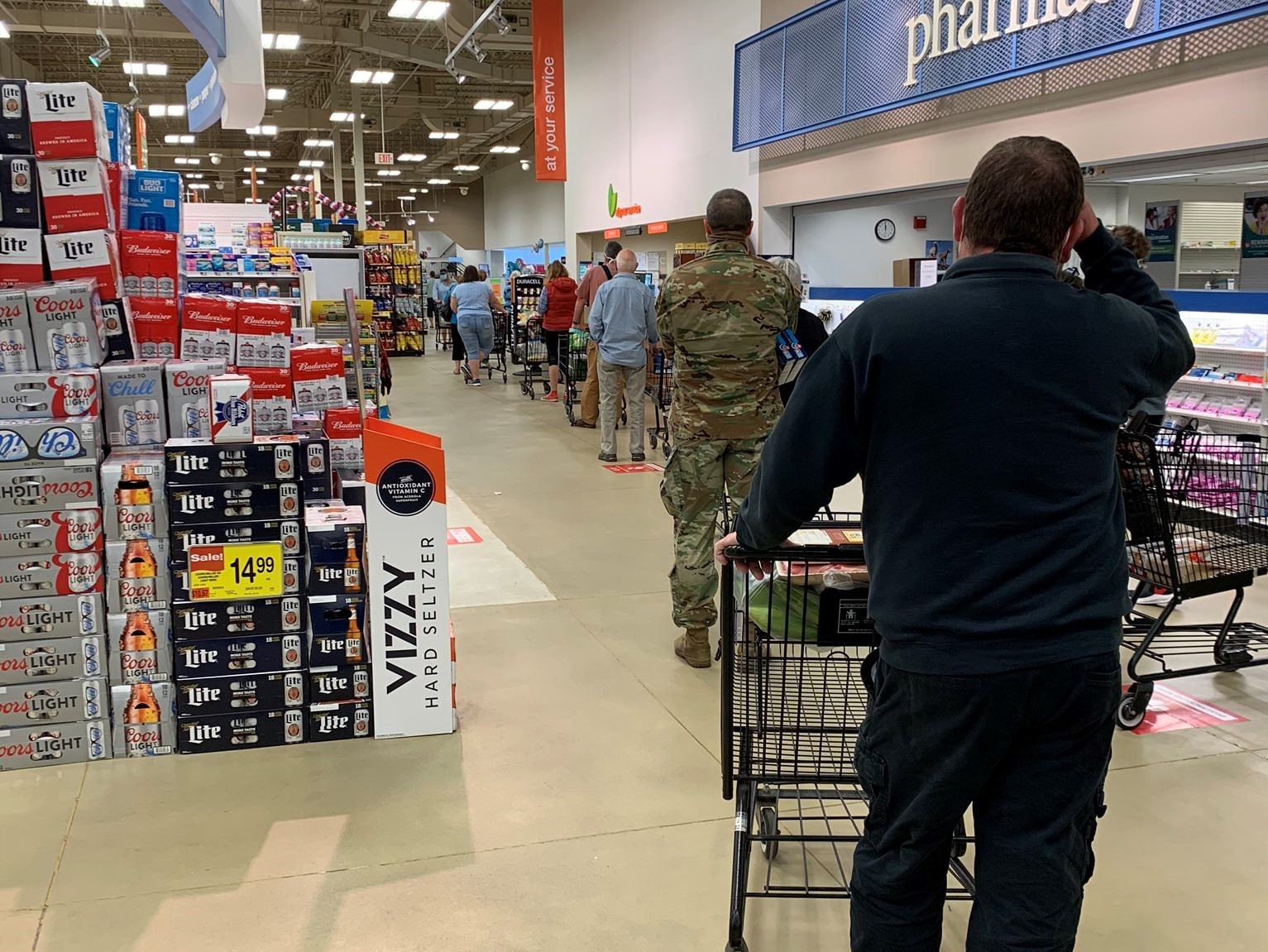
Yet in the case of uninterrupted lockdown – or, apparently, the unprecedented urgency of corporate hiring reflectively manifests a drastic shift in Instacart business model, value proposition and strategic maneuvering. Instacart has ultimately concluded it to 2020 by arbitraging exuberant supply amidst local supermarkets to make home delivery seem like a judiciously extravagant propaganda for a loyal group of raving advocates who did not worry much about the supply chain function. Conversely, the pandemic has stood that on its head: Right now, the enterprise must strugglingly manipulate limited supply and unregulated demand. It had a plethora of new shoppers who were Uber or Lyft drivers in the past, and a despondent witness in abundance that can not easily neglect the risks those shoppers are facing to deliver to them.
#3: The Future of Instacart’s Online Grocery Delivery in Post-Covid World
There is also the possibility that the future of online grocery shopping landscape may not include in-charge person-order delivery, instead people will purchase groceries on online integrated platform and then head to a store to pick them up. Instacart inaugurated such a service in 2019, but it needs to be upgraded and improved comprehensively. Walmart and Amazon also offer pick-up services.
Apparently, Instacart has delineated incontrovertible gains at a peaking point when people are reluctant to enter a grocery store and face the risk of coronavirus exposure. However, after this will over demand for online grocery delivery stick, and market equilibrium will be settled when other competitive firms endeavor to launch disruptive digital services.
Jason Ackerman is a co-founder and held the position of Chief Executive Officer of FreshDirect, a leading online grocery in the U.S, with customers in New York, New Jersey, Connecticut, and Philadelphia. He is currently the Executive Chairman – Interim CEO at TerrAscend. Today, Jason Ackerman continues to proactively embrace opportunities to incorporate sustainable systems and eco-friendly resolutions into the business model and to envision the digital transformation to innovate with food freshness and quality assurance.
Evaluate the frantic dash from Instacart service, Jason Ackerman has concluded that: “So the test is going to be their ability to manage the demand but also give a good service so people might feel the need to use it today because of safety. But it has to be a great experience so that’s going to be the real balance on how these companies are going to be focused on the balance of demand and satisfying customers”.
Since, in the long run, people will likely have reasonable choices to turn back to the grocery store, and those enterprises are sagaciously deploying customer-centric approach to uplift higher customer satisfaction well during this time that are going to outlive sustainably post-Covid.
On the one hand, Instacart is escalating as expeditiously as they can to meet the oblique shopping demand, and it’s a great opportunity to leverage a gross profit margin. Even though if Instacart is not able to build up a shopper base quickly enough, they will screw it up. Take 300.000 – employee hiring policy, for example – it is probably the compelling evidence that they did not have the infrastructure in place to ameliorate the unpredictable surge in demand.
On the other hand, Instacart is facing with other competitors like Amazon, Walmart, Kroger and more, which are going to want to fully predominate customer engagement with their associates, with their labor standards and digital avant-garde solutions. The online grocery market is estimated at USD 50 billion but it is expected to shoot to nearly one hundred and twenty billion by 2025 with Instacart holding 19% of market share and there are a myriad of retail companies that want to have a piece of the pie.
As Chief Business Officer at Instacart, Nilam leads Instacart’s endeavors to build up imperishable partnerships with retailers, consumer packaged good manufacturers, content providers, payment processors and other technology start-ups. Under Nilam’s administration, Instacart has accelerated from a 10-person start-up with 100 individual shoppers over San Francisco to its position today as the largest same-day grocery service in the country with serving more than 135 grocers across 34 U.S. markets with exceeding 18,000 personal shoppers.
Nilam conceivably anticipated that: “So what we’ve seen during this crisis is a pull forward of what we thought that it was gonna happen for couple years from now when things get back to normal here. Hopefully, sooner rather than later, grocery e-commerce will become something and Instacart will become something that customers can rely on for the times that they’d rather have two hours of their week back to spend with their families.”.
The Bottom Line
Notwithstanding some newfangled technology adoption and temporary solutions to tackle with the unprecedented shift in consumer behavior, within the economy whiplash, Instacart need to figure out how to tailor for both viral times and healthier resolutions. To maintain inside the mind of its customers, Instacart should alleviate their reputation for reliability along with legacy transparency, improve the found percentage, build up strong presence to stimulate company interest and also quickly leverage of gained advantage in dominating the retail market share.

